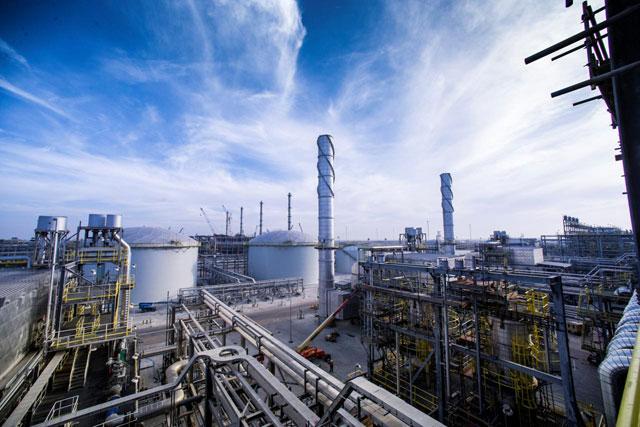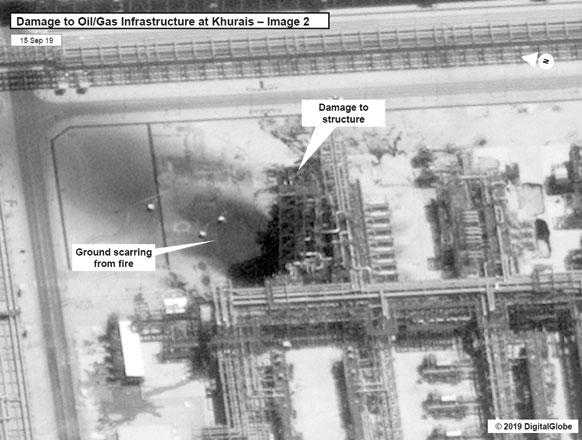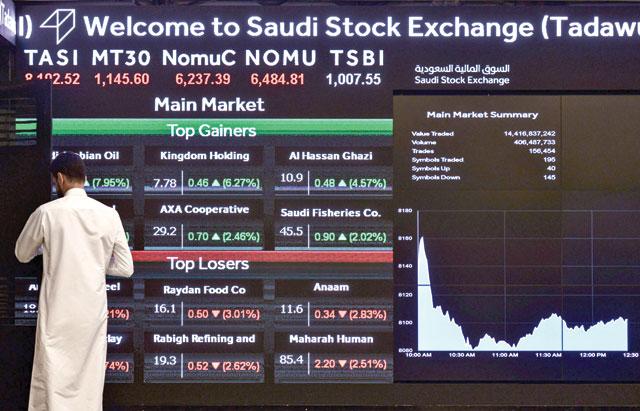You are here
Drones, sanctions, contamination: Supply surprises leave oil unfazed
By Reuters - Sep 26,2019 - Last updated at Sep 26,2019

This file photo taken on September 15 shows an Aramco oil facility near Al Khurj area, just south of the Saudi capital Riyadh (AFP photo)
LONDON — They should have started a bull run, but supply shocks that have rocked the oil industry this year have failed to deliver a sustained rise in crude prices.
Drone attacks crippled Saudi Aramco’s oil plants, US oil sanctions knocked out exports from Iran and Venezuela, and massive contamination tainted Russian oil flows.
Yet, instead of sky-high prices, the market has been kept in check by a flood of oil from the US fracking boom and worries about a global recession weighing on the demand outlook.
And there is unlikely to be a spike anytime soon, analysts and data indicate, because high-tech industry understands better than ever just how replete their market is with oil.
“Between fears of peak oil demand, unlimited shale growth, a looming global recession and the possibility that millions of barrels of OPEC barrels [sanctioned or otherwise] could return to the market fairly quickly, there is no faith in the future,” said Amrita Sen, chief oil analyst at Energy Aspect.
The Organisation of the Petroleum Exporting Countries, which includes Iran, Venezuela and its de facto leader Saudi Arabia, has continued to rein in supply this year but the group’s efforts have not delivered the hoped-for price surge.
Oil futures markets indicate that supply outages have not dealt a boost to prices as investors see the unexpected shocks to oil output will not massively dent overall supply.
Saudi bounce-back
The September 14 attacks on Aramco sites knocked out around 5.7 million bpd of capacity from the world’s biggest oil exporter, nearly 6 per cent of global oil supplies.
Despite the unprecedented damage, Saudi Arabia has swiftly restored its production capacity to 11.3 million barrels per day, just shy of its regular output, sources briefed on Aramco’s operations told Reuters.
Brent oil prices surged 15% in the wake of the attacks but have since lost most of their gains and are trading at around $62 a barrel.
While US oil output continues to surge along with the productivity of existing wells, the increasingly sparse number of operating wells could eventually drag on output and provide a boost to prices.
“We think the outlook for US supply growth is far too optimistic,” Mark Hume, portfolio manager at investment giant BlackRock’s Energy and Resources Income Trust.
“There’s a real chance of US growth going to the downside and I think balances will be tighter than one might anticipate right now,” he added.
Data transparency
Another aspect that has softened the impact of supply shocks on oil prices is the wide availability of data which gives investors a much clearer view on the operations of the market.
BP chief executive Bob Dudley said this week that the reaction to the Saudi attacks was “sensible”.
“It says something about the market — there’s instantaneous data on storage levels which didn’t exist in the past,” he said.
Technology firms increasingly offer real-time data pinpointing storage levels in oil tanks, detecting if a refinery unit is operating using heat cameras and tracking ships.
“The data availability is a bit of a game changer,” said Norbert Ruecker, head of economics at Swiss bank Julius Baer. “This speeds up what financial markets are all about.”
Related Articles
DUBAI/LONDON — Saudi Arabia’s plans to float state oil titan Aramco are prompting the country to think the unthinkable. Late last year,
LONDON — Oil prices saw their biggest daily gain since the 1991 Gulf War on Monday after drone attacks on two Saudi oil facilities halved ou
RIYADH — Energy giant Saudi Aramco said on Sunday its second-quarter profits plunged a massive 73 per cent due to sharply lower oil prices a

















